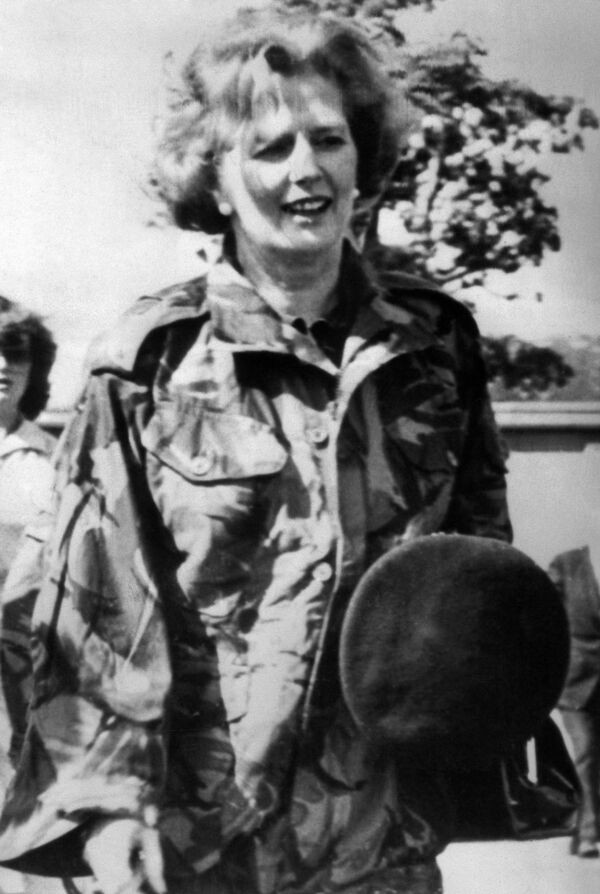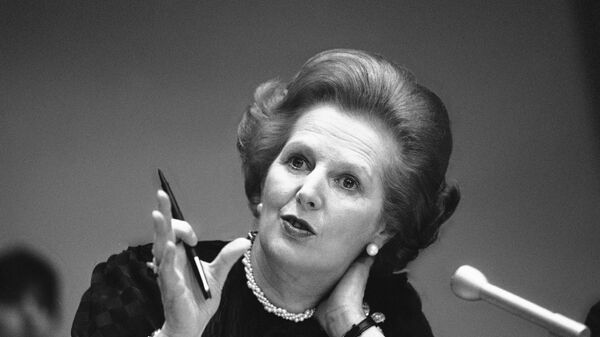"I do not know what to do about the border," Thatcher told him during an "unusually tense" meeting between the pair at a European Council meeting in Hannover, Germany.
The documents released by the Republic of Ireland's National Archives on Friday, December 28, suggest she was considering closing the border with the Republic of Ireland.
During "The Troubles" — which lasted from the late 1960s until the signing of the Good Friday Agreement in 1998 — the Irish Republican Army (IRA) carried out bomb and gun attacks against the British Army, police and civilian targets in Northern Ireland in a bid to force UK forces to leave the island of Ireland, which they wanted to unite despite the opposition of the loyalist, pro-British Protestant majority in Ulster.
There’s me at the Brexit negotiations. pic.twitter.com/sVuFOahZ3o
— The Irish Border (@BorderIrish) 8 February 2018
"If we don't defeat the IRA, I don't know what I'm going to do. We can't have the border open as it is now. In recent times my feelings have run far higher than ever before in my life. I am not a natural hater, they are using the border to carry on an effective campaign," Mrs. Thatcher told Mr. Haughey.
Thatcher Said it was Impossible to 'Seal' Irish Border
"I can't seal the border. There is no way we can patrol the 500 miles…Everywhere there is an open border," she told Mr. Haughey, who she blamed for allowing IRA terrorists to hide in the Republic and then bring bombs and guns into Ulster.

Mr. Haughey repeatedly denied Mrs. Thatcher's claims he was soft on the IRA.
She told Mr. Haughey any attempt to create a united Ireland would be rejected by pro-British loyalists and would trigger "the worst civil war in history" which "would spread to the mainland."
The month of March 1988 was one of the most brutal and momentous in the conflict.
On March 6, 1988 three IRA terrorists — Daniel McCann, Mairead Farrell and Sean Savage — were shot dead by an SAS unit in the British colony of Gibraltar.
It later emerged the trio had been unarmed and were not in possession of a viable bomb.
Thousands of people welcomed the bodies back to Northern Ireland and on March 16 they were to be buried in the republican plot in Belfast's Milltown Cemetery.
Suddenly a lone loyalist gunman lobbed grenades into the crowd of mourners, who included Sinn Fein leader Gerry Adams.
Three people were killed — one of them an IRA man, Kevin Brady — and 60 injured.
The Milltown massacre, as it became known, ramped up the tension in Belfast even more.
“The IRA plan in five or six different places in the South. They use the border for this purpose. If they go south we lose them at the Border.” — Dublin archive papers a reminder of how difficult it was to police Irish Border https://t.co/R3WnA8x12I
— lisa o'carroll (@lisaocarroll) 28 December 2018
Three days later Brady's funeral cortege was moving slowly down the Andersonstown Road, a staunchly republican area of west Belfast, when a car appeared with two men in it.
The crowd attacked the pair, who were armed, and dragged them out of the car, handing them over to an IRA gang who beat them and finished them off with gunshots in Casement Park.
It later transpired the two men were British soldiers — Corporal David Howes and Corporal Derek Wood of the Royal Corps of Signals.
Thatcher Haunted by Murder of British Army Corporals
"Those two corporals were among the worst things in my life. The savagery was unbelievable," Mrs. Thatcher told Mr. Haughey at their meeting in Germany three months later.
She also urged Mr. Haughey to stem the tide of Irish immigrants coming to Britain for better economic conditions.
“Your people come over to us. I wish they wouldn’t,” Margaret Thatcher told the Irish prime minister. “They come looking for housing and services. It’s the same in Northern Ireland”
— Andrew Adonis (@Andrew_Adonis) 28 December 2018
We had come a long way eradicating this anti-Irish racism — until Brexit https://t.co/SEJDhCaQ1s
"Your people come over to us. I wish they wouldn't. They come looking for housing and services. It's the same in Northern Ireland. If there was a vote tomorrow they would vote to stay with us. They have better conditions in Northern Ireland and England," she told an astonished Mr. Haughey.
The Irish economy was largely agriculture-led at the time and it was not until the late 1990s that the "Celtic Tiger" woke up and improved economic conditions for people in the Republic.
Mrs. Thatcher remains a hate figure among Irish republicans in Ulster, many of whom danced in the streets when she died in 2013.
The Irish border and the so-called "backstop" has become the key issue in the Brexit deal which Theresa May is struggling to get passed in the UK Parliament.
The Democratic Unionist Party (DUP), whose 10 MPs have propped up the Conservative Party since Mrs. May failed to win a majority in the 2017 General Election, threatened to vote against the deal earlier this month unless she could get the EU to change it.
The party's chief concerns are linked to the backstop solution for Northern Ireland, which would see all of the UK remain in a customs union with the European Union. However, Northern Ireland would be subject to separate regulations as well, which could lead to more checks on some goods between the region and the rest of the United Kingdom.




